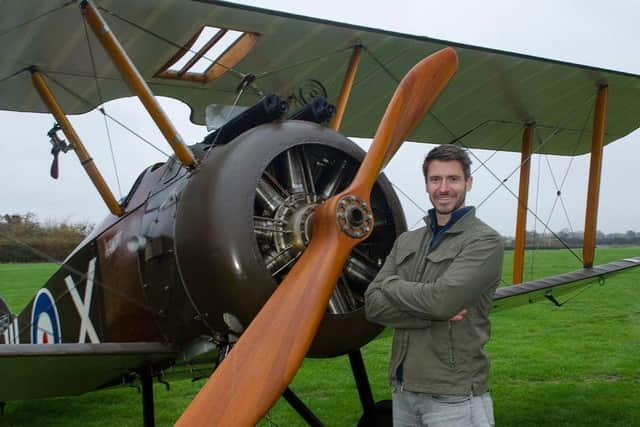British Planes That Won the War with Rob Bell
and live on Freeview channel 276
Here’s a fun fact for all the pub quizzers out there. Did you know the presenter of this show is among a small (but growing) group of people who have successfully completed the 777 World Marathon Challenge?
It’s true. In 2015, Rob Bell ran seven marathons in seven days on seven continents, which tells you a lot about his physical and mental strength.
Advertisement
Hide AdAdvertisement
Hide AdAccording to his website, the challenge gave Rob and five of his friends the chance to see how far they could push their bodies – quite far, as it turned out.


They also raised £100,000 for KEEN London in the UK and the John Maclean Foundation in Australia, charities helping provide access to sport and physical activity for kids with mental and physical disabilities.
The feat will come as no surprise to fans of his series Man Vs World, in which he took part in several adventure sports across different global locations, but Rob is still arguably best known for fronting some of the small screen’s most interesting programmes exploring great engineering feats and profiling some of the people behind them.
His impressive CV includes Secrets and Mysteries of London, Underground Britain and Mysteries of the Abandoned, as well as Brunel: The Man Who Built Britain, a fascinating profile of Isambard Kingdom Brunel.
Advertisement
Hide AdAdvertisement
Hide AdHe’s gone back in time to find out what was under Stonehenge, has chronicled 2,000 years of London’s history and taken a tour of one of the country’s nuclear submarines.
His were the perfect hands in which to place this absorbing series, telling the compelling stories of four British-built planes that became masters of the sky, along with the hero pilots who flew them.
In this concluding episode, Rob Bell celebrates the Harrier Jump Jet. The innovative Harrier was the first operational aircraft to employ vertical take-off and landing, or VTOL. Developed during the Cold War, the Harrier revolutionised airborne combat.
Tactical experts were trying to overcome one of the basic drawbacks of the aeroplane – its reliance on runways, which are vulnerable to enemy bombing raids.
Advertisement
Hide AdAdvertisement
Hide AdWithout operational runways or airstrips, an entire air force could effectively be grounded, so VTOL became the holy grail of air combat – and it was made a reality in the shape of the Harrier.
The jet’s maiden flight came in 1967, where it showcased how it propelled air from its engine through four nozzles under the fuselage and how the nozzles could be angled downwards, lifting the plane straight up.
That flexibility meant that Harriers could operate out of jungle clearings or from small helipads.
Rob reveals the engineering design that went into producing such a game-changing fighter jet and how it contributed to the Cold War deterrent.
Advertisement
Hide AdAdvertisement
Hide AdThe programme also meets Harrier pilots who took part in its first combat operation in the Falklands War, and hears about the influential role the planes played.
As Rob explains, the Harrier may now be retired from service in Britain, but its legacy continues to influence the modern jets of today’s high-tech warfare.